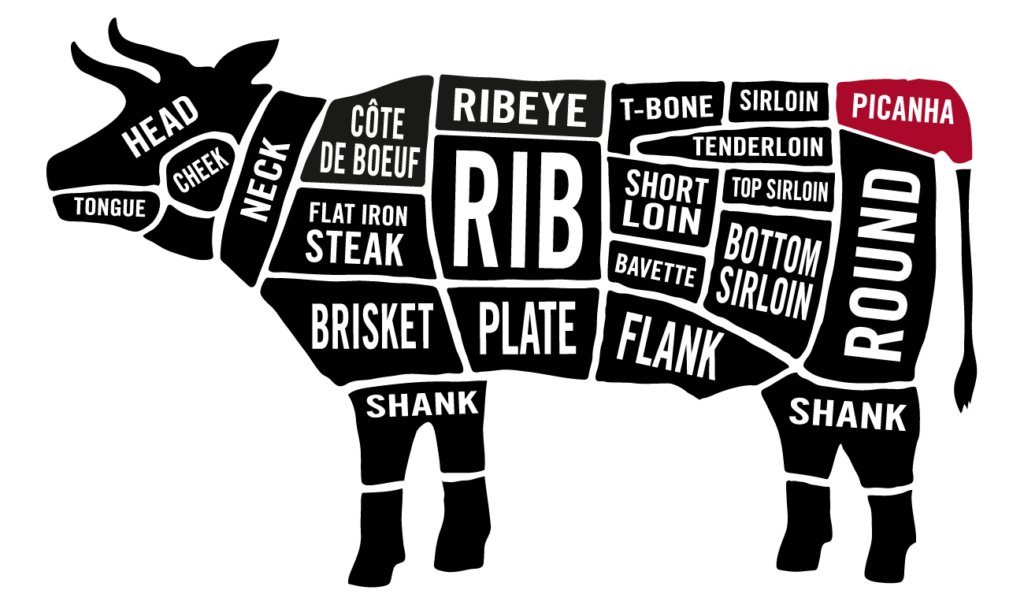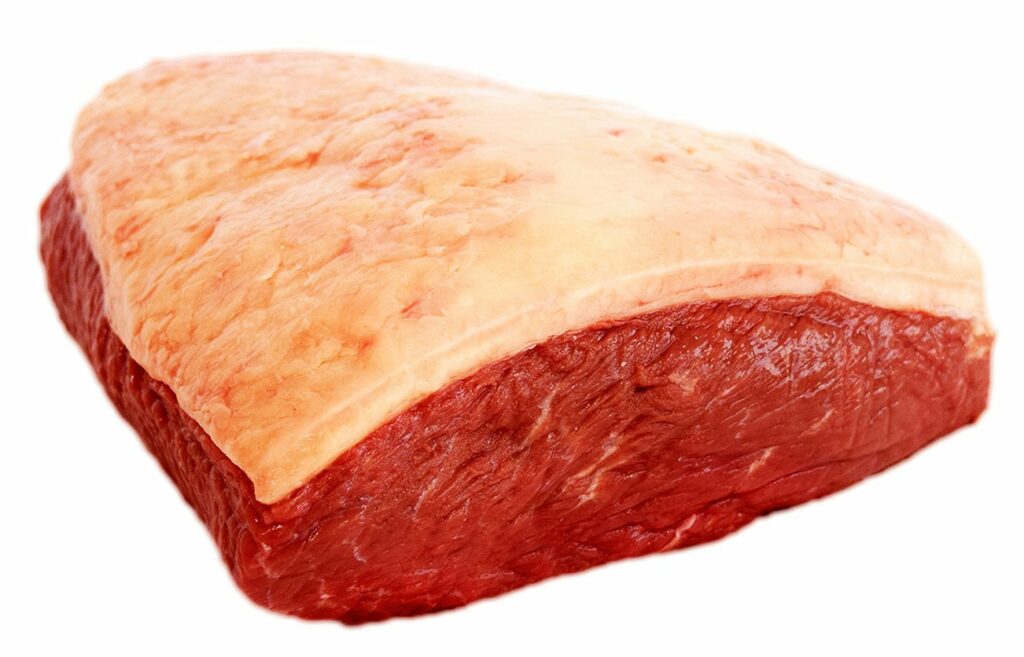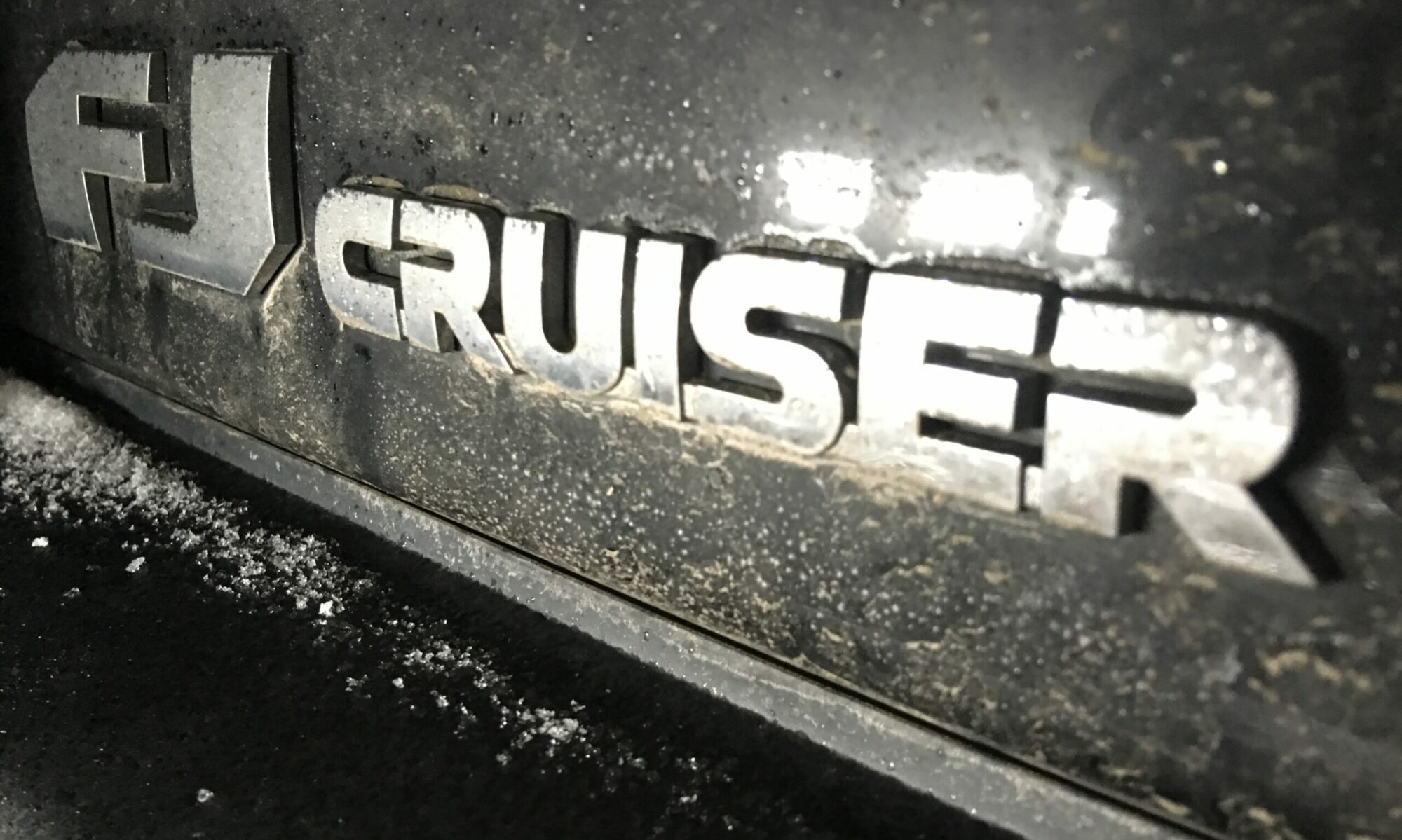Don’t know what Picanha is? If you don’t live in South America, that’s not surprising.
It’s pronounced pick-AHN-yah – but that middle syllable should be pronounced using your nose.
Picanha is a staple of Brasilian steakhouses (properly referred to as churrascarias) across the world, and homes all across Brasil. When prepared properly, it’s more tender and much tastier than the best cuts of meat. The meat is leaner than Filet Mignon (but you’d never eat Picanha without the fat).
Where does it come from?
Picanha is known by a lot of names. “Picanha Cap,” “Sirloin Top Cap,” and “Rump Cap” are a few. It’s commonly sold a lot in the United States. It’s essentially the muscle next to the tail.

Where to get it?
Almost every butcher has Picanha, they just may not realize it. It can come as part of a beef order for whole hindquarters. When the butcher cuts into the whole beef, they often discard this part of the meat, not realizing that they’re basically chucking the best part of the cow. People typically don’t buy it because of the fat cap (which, is the best part).
Here is an awesome video from Sous Vide Everything about how to butcher and trim a hindquarters properly to get the best Picanha cut. This will also help you recognize a good cut of Picanha roast.
It also shows how to slice up Picanha and cook it with a Sous Vide and a blow torch.
Local Butcher
I have to believe that a local butcher should be able to get this for you on request. Though, I’ve never done this myself.
Supermarkets
I discovered that one of my local supermarkets (Safeway, here in Northern California), has a butcher that actually knows how to cut Picanha. It goes on sale every few weeks. Even if there’s none available, I can call in and make a request for it in the morning, and they will cut a fresh roast off for me and have it ready in the afternoon.
It really helps to have a good relationship with a local butcher, even at a supermarket.
Online
Lots of online places have really good Picanha. Personally I’ve used Butcher Box, and they always have great meat. Butcher Box calls their Picanha “Sirloin Top Cap.” It always comes in whole roasts, as it should be.
What to Buy
Always buy the whole roast. Don’t let someone slice up your Picanha for you, unless they know what they’re doing and you’re going to eat it the same day. Slice it yourself, when you’re ready.

You want a pretty even fat cap on the top of it. The fat cap should be ½” – ¾” thick.
Preparation
We’re going to talk a little bit here about how to prep Picanha to cook as a steak. Alternatively you could cook it on a skewer, but I’m not going to cover that. If you’re interested in skewers, see this Guga Foods video on YouTube, which covers both steak and skewer prep.
Directions
- Slice 1″-1 ½” steaks with the grain
This allows cutting the meat against the grain when eating. The Guga Foods video does a pretty good job of explaining why to cut with the grain. Slice with the fat side down, because the fat is a little harder to cut through and you don’t want to squish the flesh trying to cut through the fat on the top. - Season with rock salt only
Don’t use anything else — no pepper, granulated garlic, or secret spice mix. Salt. Only. Period. I use Sal Grosso Thick Barbecue Salt. This stuff is the best, and you only need very little of it. If you don’t have rock salt handy, kosher salt also works. The Himalayan stuff also will be “fine” – but only as a last resort. - Rest for 30 minutes at least
Use this time to turn on your grill and get it heated up. - Preheat the grill on High
As hot it will go. Like surface of the sun hot. - Put the steaks on the grill. Close the lid
- Pay close attention. The fat cap will start to cook and drip fat onto the grill, which could start a fire in the grill. You’ll want to make sure to flip them – maybe wear gloves to protect your hands. Here’s a slow-mo video of me cooking Picanha:
- Cook until your desired doneness. Picanha is great when it’s medium, but it’s also good at all other doneness. Thicker pieces will be hard to cook it more rare than medium without leaving the fat cap undercooked. Make sure the fat is seared.
The Reverse-Sear
This “super hot and super fast” approach might not be for everyone. Another option would work well if you’re able to create hot and cool zones on your grill.
Directions
- Follow steps 1-3 above
- Heat the hot side of the grill only – no flame on the cool side
- Put the steaks on the cool side and close the lid. The flame from the hot side will heat up the cool side and cook the steak without flare-ups, allowing you to have better control of the cook
- Tend to the steak, flipping as needed until just before your desired doneness
- The steak still needs to be finished hot and fast, with direct flame. Move the steaks to the hot side and close. Flare ups should happen quickly – so be ready to flip after a short time and then remove from the grill
Cutting
Cut against the grain. The pieces should be ¼” – ½” thick, and should have a small piece of fat cap on each piece. Eat the whole piece! If you really can’t stand eating the fat (together with the beef), go ahead and cut it off, but leave a little bit of meat on the fat so that you can give it to someone who will eat it and appreciate it for all of it’s goodness and wonder.
